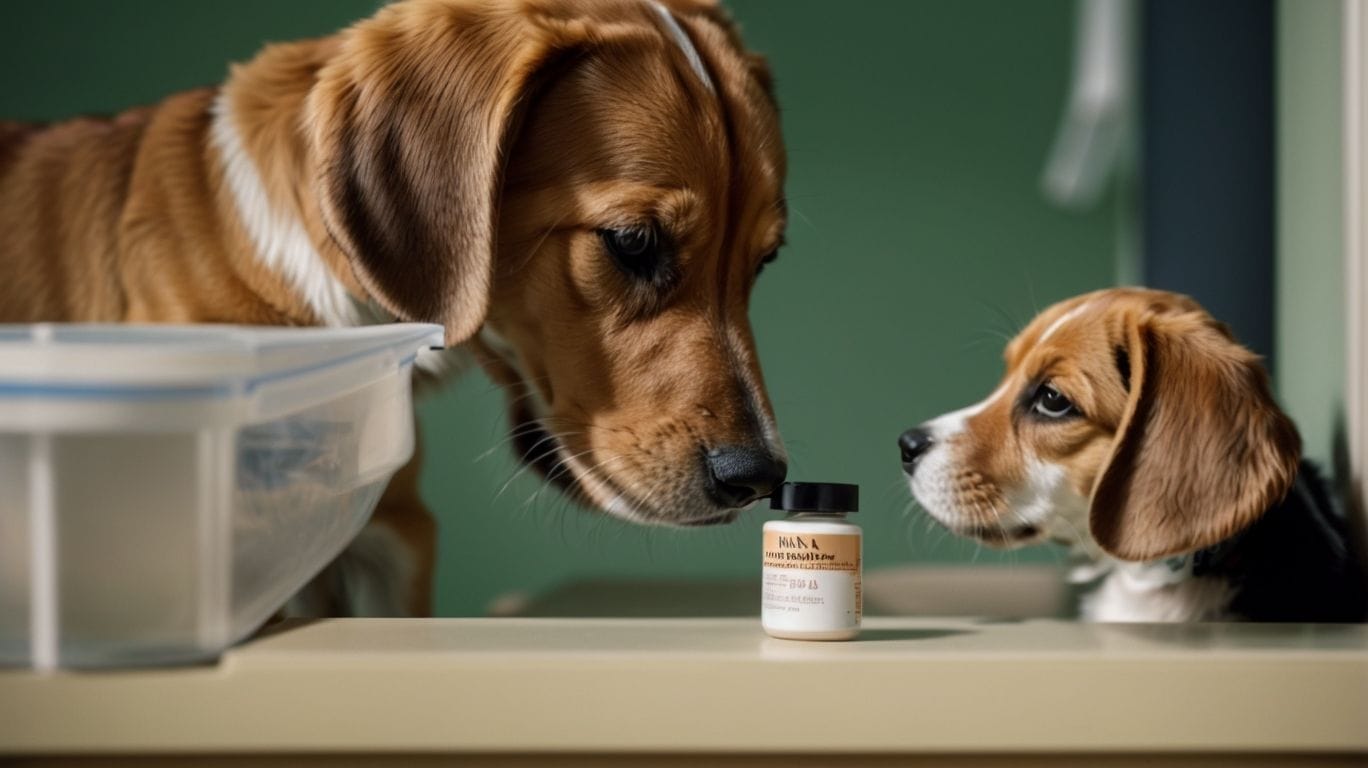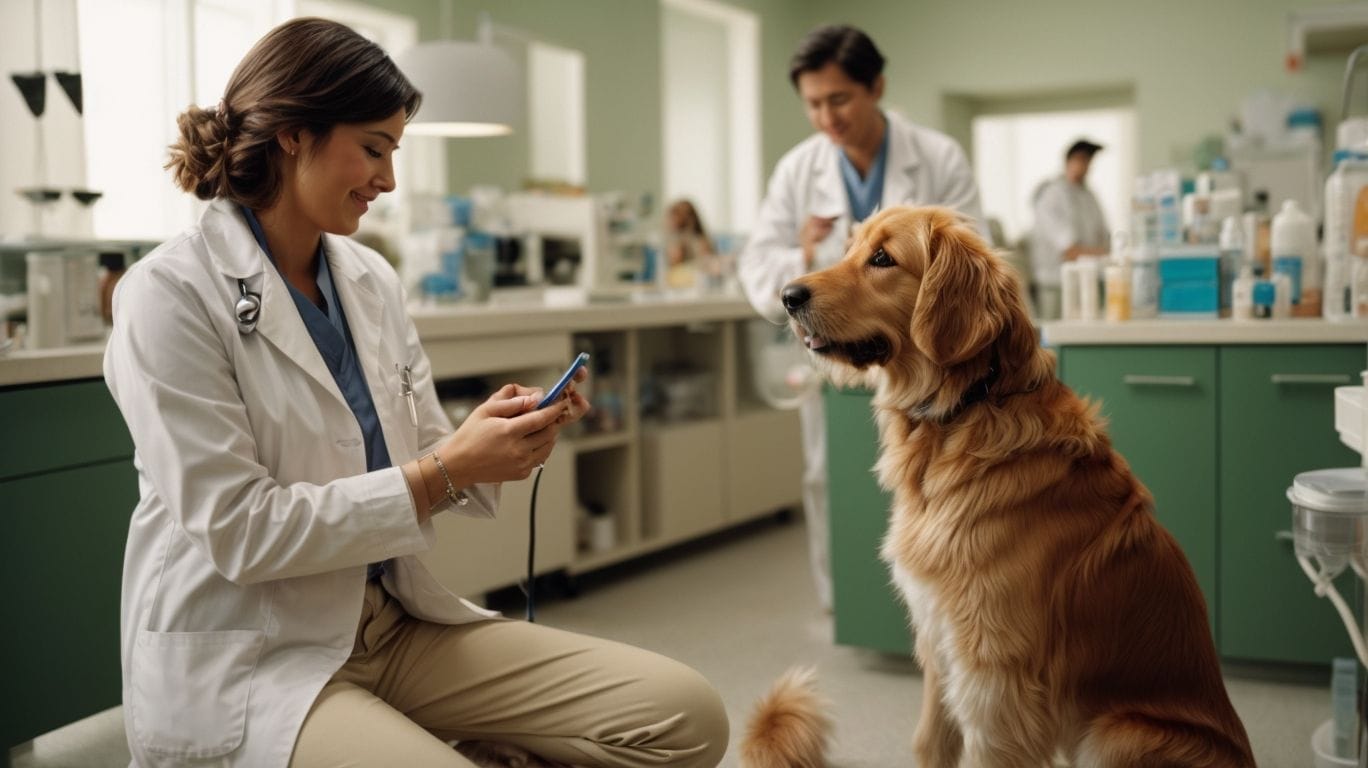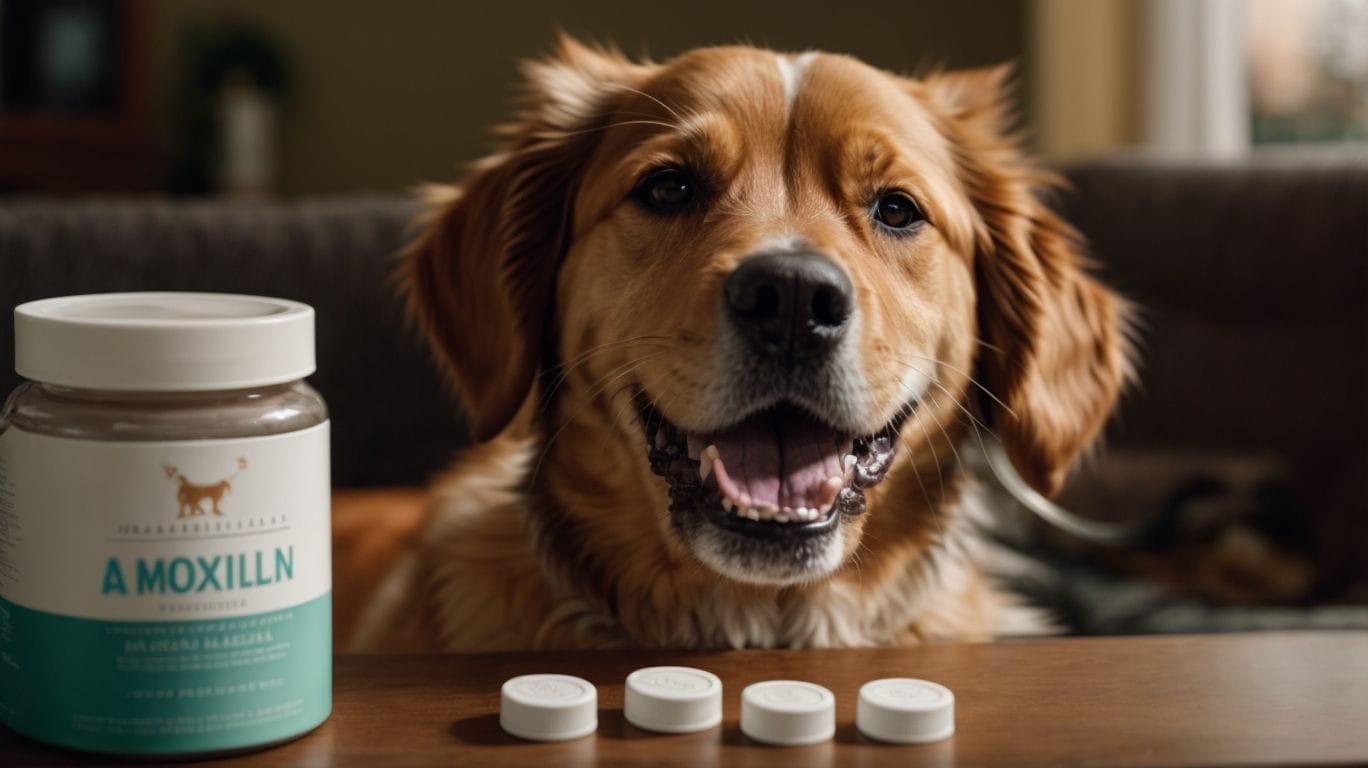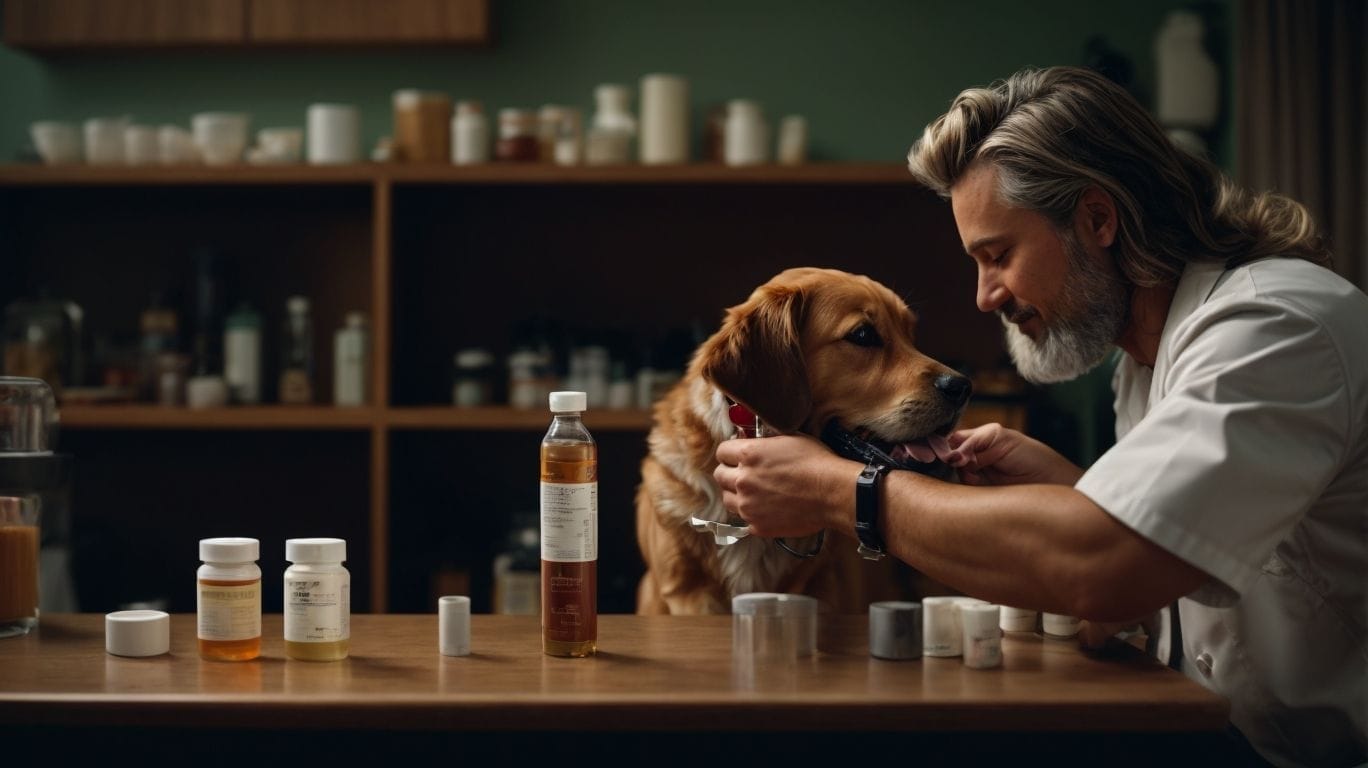Table of Contents
Add a header to begin generating the table of contents
Amoxicillin is a commonly used antibiotic in human medicine, but can it be safely administered to dogs? This article aims to provide clarity on the topic and guide pet owners who may be considering using amoxicillin for their furry companions.
Amoxicillin is an antibiotic that belongs to the penicillin family. It is used to treat various bacterial infections in humans, ranging from respiratory infections to urinary tract infections. However, the use of amoxicillin in dogs should be approached with caution.
While amoxicillin is generally safe for dogs, it is crucial to consult with a veterinarian before administering it. Different factors, such as the dog’s weight, overall health condition, and the specific infection being treated, need to be considered to determine if amoxicillin is suitable for your dog.
Certain dogs may benefit from amoxicillin, such as those with bacterial infections or specific conditions that can be addressed with this antibiotic. However, some dogs should avoid amoxicillin, particularly those with allergies to penicillin or a history of negative reactions to antibiotics.
Amoxicillin can be beneficial for dogs in treating various conditions, including bacterial infections, urinary tract infections, and skin infections. However, it is essential to remember that using any medication, including amoxicillin, should always be done under the guidance of a veterinarian.
Before administering amoxicillin to your dog, be aware of potential side effects, including gastrointestinal upset, allergic reactions, and organ damage. Dosage is another critical aspect to consider, and it should always be determined by a veterinarian based on factors like the dog’s weight, age, and the severity of the infection.



It’s important to consult with a vet to determine if amoxicillin is safe for your dog based on their individual health profile.




Key takeaways:
- Amoxicillin can be safe for dogs: When prescribed by a veterinarian, amoxicillin can be given to dogs to treat certain bacterial infections, such as urinary tract infections, skin infections, and respiratory tract infections.
- Dosage and proper administration are crucial: The dosage of amoxicillin for dogs should be determined by a veterinarian based on factors like the dog’s weight, health condition, and the severity of the infection. It is essential to follow the prescribed dosage and duration of treatment.
- Precautions and side effects: While generally safe, amoxicillin can have side effects in dogs, including gastrointestinal upset, allergic reactions, and antibiotic resistance. It is crucial to monitor your dog for any adverse reactions and to consult with a veterinarian if any concerns arise.
Can Dogs Take Amoxicillin?

Photo Credits: Petnarnia.Com by Jerry Rodriguez
Can Dogs Take Amoxicillin? Dogs can take amoxicillin, but it is important to consult a veterinarian before administering any medication. The vet will determine the appropriate dosage and duration of treatment based on the dog’s weight, age, and health condition. Amoxicillin is commonly prescribed to dogs for bacterial infections, such as urinary tract infections, skin infections, and respiratory infections. It should not be given to dogs with a known allergy to penicillin. It is crucial to follow the veterinarian’s instructions and complete the full course of medication to ensure effective treatment.What is Amoxicillin?

Photo Credits: Petnarnia.Com by Adam White
Amoxicillin is a common antibiotic used in both humans and animals to treat bacterial infections. It belongs to the penicillin family and works by inhibiting the growth of bacteria. Amoxicillin is effective against a wide range of bacterial infections, including respiratory, urinary tract, and skin infections. What is Amoxicillin? It is important to note that amoxicillin should only be used under the guidance of a veterinarian for dogs, as the dosage and duration of treatment can vary depending on the specific condition being treated. Always consult with a veterinarian before administering any medication to your dog.Is Amoxicillin Safe for Dogs?

Photo Credits: Petnarnia.Com by Brian Jones
Is Amoxicillin Safe for Dogs? Amoxicillin is generally considered safe for dogs when prescribed by a veterinarian. It should only be given under professional guidance to ensure the well-being and health of your dog. Dosage and frequency of administration can vary based on the dog’s size and condition, so it’s essential to consult a veterinarian. When determining the safety of amoxicillin for dogs, potential side effects, drug interactions, and allergic reactions should be taken into account.What Dogs Can Take Amoxicillin?
What Dogs Can Take Amoxicillin? Dogs can safely take amoxicillin, but it is always important to consult with a veterinarian before administering any medication to them. Amoxicillin is commonly prescribed to dogs for treating various bacterial infections such as respiratory tract infections, skin infections, and urinary tract infections. The dosage and duration of the treatment should always be determined by a veterinarian who will consider the specific condition and needs of the dog. It is absolutely crucial to closely follow the instructions provided by the veterinarian and to complete the full course of antibiotics in order to ensure effective treatment. However, it should be noted that not all dogs can take amoxicillin, and it may not be suitable for dogs with certain medical conditions or allergies. Therefore, consulting with a veterinarian is essential to determine if amoxicillin is safe and appropriate for a particular dog.What Dogs Should Not Take Amoxicillin?
Dogs with certain medical conditions or taking specific medications should not take amoxicillin. Here are some examples of what dogs should not take amoxicillin:| 1. Dogs with allergies to penicillin or other antibiotics should avoid amoxicillin. |
| 2. Dogs with liver disease should not take amoxicillin due to potential complications. |
| 3. Dogs taking medications like methotrexate or probenecid should not take amoxicillin as it may interact with these drugs. |
| 4. Pregnant or nursing dogs should not take amoxicillin without veterinary guidance. |
| 5. Dogs with kidney disease may require dosage adjustments or alternative medications. |
What are the Uses of Amoxicillin in Dogs?

Photo Credits: Petnarnia.Com by Jason Carter
Amoxicillin is a commonly prescribed antibiotic for dogs that can treat a range of bacterial infections. It is effective in treating respiratory infections, urinary tract infections, skin infections, and ear infections in dogs. What are the uses of amoxicillin in dogs? It can also be used to prevent infections after surgeries or dental procedures. It is important to note that amoxicillin should only be given to dogs under veterinary guidance. The dosage and duration of treatment may vary depending on the specific condition and size of the dog. Amoxicillin is a valuable tool in veterinary medicine for addressing bacterial infections in dogs.Can Amoxicillin Be Used for Bacterial Infections in Dogs?
Yes, amoxicillin can be used for bacterial infections in dogs. It is an antibiotic that is effective against a wide range of bacteria. Common bacterial infections in dogs that can be treated with amoxicillin include skin infections, urinary tract infections, respiratory tract infections, and dental infections. It is important to consult with a veterinarian to determine the appropriate dosage and duration of treatment for your dog. It is also important to follow the prescribed dosage and complete the full course of treatment to ensure effective eradication of the bacterial infection. My friend’s dog recently developed a skin infection after getting a cut while playing outside. The veterinarian prescribed amoxicillin to treat the infection. After a few days of treatment, the infection started to clear up, and the dog was back to her happy and healthy self in no time. Amoxicillin proved to be a valuable tool in treating bacterial infections in dogs and played a crucial role in helping her furry friend recover.Can Amoxicillin Treat Urinary Tract Infections in Dogs?
Yes, amoxicillin can be used to treat urinary tract infections in dogs. These infections, known as UTIs, can occur in the bladder, urethra, or kidneys. Amoxicillin, an effective antibiotic, specifically targets the bacteria responsible for the infection. By inhibiting the growth of these bacteria, it enables the body’s immune system to successfully combat the infection. Prior to administering any medication to your dog, it is crucial to consult with a veterinary professional. The veterinarian will assess the severity of the infection, take into account the dog’s weight and overall health, and determine the appropriate dosage and duration of treatment. It is imperative to strictly adhere to the vet’s instructions and ensure the completion of the full course of medication.Can Amoxicillin Help with Skin Infections in Dogs?
Can Amoxicillin Help with Skin Infections in Dogs? Amoxicillin can be beneficial in treating skin infections in dogs. Skin infections in dogs can be caused by various bacteria, such as Staphylococcus and Streptococcus. Amoxicillin is an effective antibiotic against these types of bacteria. It works by halting the growth and multiplication of the bacteria, enabling the dog’s immune system to combat the infection. It is important to note that the use of amoxicillin for skin infections in dogs should be determined by a veterinarian, who will consider factors such as the severity of the infection and the overall health of the dog.Can Amoxicillin Treat Respiratory Tract Infections in Dogs?
Yes, Amoxicillin can treat respiratory tract infections in dogs. Amoxicillin is an antibiotic that is effective against a wide range of bacteria, including those that can cause respiratory infections. Common respiratory tract infections in dogs, such as bronchitis, pneumonia, and kennel cough, can be treated with Amoxicillin. This medication works by inhibiting the growth and reproduction of bacteria, which helps alleviate symptoms and promote healing. However, it is important to consult a veterinarian before administering Amoxicillin to ensure the correct dosage and duration of treatment for your dog’s specific condition.Can Amoxicillin Treat Helicobacter Infections in Dogs?
Amoxicillin, an effective antibiotic, can treat Helicobacter infections in dogs. Helicobacter is a bacteria that can cause stomach ulcers and various gastrointestinal issues in dogs. By inhibiting the growth and reproduction of the bacteria, Amoxicillin works towards resolving these infections. It is crucial to consult with a veterinarian to determine the appropriate dosage and duration of treatment, tailored to the specific needs and health condition of the individual dog. Regular follow-up appointments are essential to monitor the progress and make any necessary adjustments to the treatment plan. Can Amoxicillin treat Helicobacter infections in dogs?Can Amoxicillin Treat Lyme Disease in Dogs?
Can Amoxicillin Treat Lyme Disease in Dogs? Amoxicillin, an antibiotic, can effectively treat Lyme disease in dogs. This disease is caused by a bacterial infection that is transmitted through ticks. By inhibiting the growth and multiplication of bacteria, amoxicillin allows the dog’s immune system to fight off the infection. However, it is crucial to consult with a veterinarian before administering amoxicillin to ensure the proper dosage and duration of treatment for the specific case. Depending on the severity of the infection, other treatment options may also be considered.Can Amoxicillin Treat Infected Wounds or Abscessed Teeth in Dogs?
Can Amoxicillin Treat Infected Wounds or Abscessed Teeth in Dogs? Amoxicillin is an effective medication that can be used to treat both infected wounds and abscessed teeth in dogs. Infected wounds occur when bacteria enter the body through a cut or puncture. Amoxicillin works by killing the bacteria causing the infection, reducing inflammation, and promoting healing. In the case of abscessed teeth, which happen when an infection spreads to the root of a tooth, leading to pus-filled pockets, Amoxicillin can help eliminate the infection, reduce pain, and prevent further complications. To ensure the correct dosage and duration of treatment, as well as to address any underlying dental issues, it is important to consult with a veterinarian.What are the Side Effects of Amoxicillin in Dogs?

Photo Credits: Petnarnia.Com by Alexander Mitchell
What are the Side Effects of Amoxicillin in Dogs? When considering giving amoxicillin to your dog, it’s important to be aware of the potential side effects. Some common side effects of amoxicillin in dogs include gastrointestinal upset, diarrhea, and allergic reactions. More serious side effects, such as liver damage or blood disorders, may also occur. It is essential to consult with your veterinarian before administering any medication to your dog and to closely monitor their health while they are taking amoxicillin. Monitoring for any adverse reactions and contacting your veterinarian if you notice any concerning symptoms is crucial for your dog’s well-being.What is the Proper Dosage of Amoxicillin for a Dog?

Photo Credits: Petnarnia.Com by Vincent Lee
Determining the proper dosage of amoxicillin for a dog depends on several factors including their weight, condition, and the specific infection being treated. It is crucial to seek guidance from a veterinarian in order to obtain accurate dosing instructions. Typically, the recommended dosage is 5-10 mg per pound of body weight to be administered every 12 hours for a duration of 7-10 days. However, dosages may vary, thus professional advice is necessary. Adhering strictly to the prescribed dosage schedule is important in order to avoid antibiotic resistance or any adverse effects. Ensuring precise dosage information is essential for the safe and effective treatment of your beloved furry companion. In a similar vein, it is worth mentioning that the first recorded instance of antibiotics being used in veterinary medicine traces back to the discovery of penicillin in the early 20th century. In 1939, veterinarian Howard Florey and his team successfully treated a dying police dog named Toby with penicillin, which demonstrated the potential of antibiotics in veterinary practice. This momentous event set the stage for the subsequent use of antibiotics in improving animal health and saving the lives of countless canines in the years that followed.How is the Dosage of Amoxicillin Determined for Dogs?
The dosage of amoxicillin for dogs is determined based on their weight, overall health, and the severity of the infection being treated. Veterinarians calculate the appropriate dosage using a formula that takes into account these factors. How is the Dosage of Amoxicillin Determined for Dogs? The type of infection being treated and the specific strain of bacteria involved may also influence the dosage. It is crucial to follow the veterinarian’s instructions and administer the prescribed amount of amoxicillin to ensure effective treatment while minimizing the risk of side effects. Adjusting the dosage without professional guidance can lead to under or over-dosing, which may compromise the effectiveness of the medication.Can I Give My Dog Amoxicillin Prescribed for Humans?
Can I Give My Dog Amoxicillin Prescribed for Humans? It is not recommended to give dogs amoxicillin prescribed for humans without consulting a veterinarian. While amoxicillin is a commonly prescribed antibiotic for both humans and dogs, the dosage and potential side effects can vary between species. Giving your dog human amoxicillin can lead to incorrect dosing and could potentially harm your pet. It is important to seek professional veterinary advice to ensure your dog receives the appropriate medication for their specific needs. In a similar vein, a friend of mine once gave their dog human amoxicillin without consulting a vet. Unfortunately, this led to an overdose and severe gastrointestinal distress for the dog. It is always best to consult a professional before administering any medication to your pet.What Precautions Should be Taken When Giving Dogs Amoxicillin?

Photo Credits: Petnarnia.Com by Christian Carter
When it comes to giving dogs amoxicillin, there are important precautions to consider. In this section, we’ll dive into the various aspects you need to be aware of. From missed doses and water changes to potential allergic reactions and facial swelling, we’ll cover it all. We’ll also discuss gastrointestinal upset, difficulty breathing, skin irritation, as well as the risks of antibiotic resistance and drug interactions. Stay informed to ensure your furry friend stays safe and healthy.Missed Dose and Water Changes
When giving dogs amoxicillin, it’s crucial to be cautious about missed doses and making water changes. It’s important to avoid missing a dose as it can disrupt the treatment and potentially allow the infection to return or worsen. To ensure timely administration, it is recommended to establish a consistent schedule and set reminders. Additionally, it’s necessary to be mindful of any changes in water source or quality, as it can impact the effectiveness of the medication. Tap water with high mineral content, in particular, may interact with amoxicillin, leading to a reduction in its potency. To maintain the efficacy of amoxicillin, it’s advisable to provide your dog with clean, filtered water.Allergic Reactions and Facial Swelling
Allergic reactions and facial swelling are potential side effects that can occur when dogs are administered amoxicillin. It is essential to closely observe for any indications of an allergic reaction, including itching, hives, or difficulty breathing. Additionally, dogs may experience facial swelling, which should be taken seriously and promptly addressed by a veterinarian. If your dog displays any signs of an allergic reaction or facial swelling, discontinue the use of amoxicillin and seek immediate veterinary advice. To ensure the safety and well-being of your dog, it is crucial to adhere to the prescribed dosage and diligently monitor for any adverse reactions.Gastrointestinal Upset and Abdominal Pain
Gastrointestinal upset and abdominal pain are potential side effects of amoxicillin in dogs. Some dogs may experience diarrhea, vomiting, or appetite loss while taking this antibiotic. It is important to monitor your dog closely for any signs of discomfort and consult a veterinarian if these symptoms persist. To alleviate gastrointestinal upset, you can try administering the medication with food or using a probiotic supplement to support digestive health. Remember to always follow the prescribed dosage and duration of treatment. Pro-tip: If your dog experiences severe gastrointestinal upset, contact your veterinarian to discuss potential alternative treatment options.Difficulty Breathing and Skin Irritation
If your dog experiences any of these symptoms, such as difficulty breathing and skin irritation, it is important to contact your veterinarian immediately. Difficulty breathing can be a sign of a serious allergic reaction, and skin irritation may indicate an adverse reaction to the medication. These potential side effects, including difficulty breathing and skin irritation, should not be ignored, and prompt medical attention is necessary to ensure the health and well-being of your dog. It is always important to follow your veterinarian’s instructions and monitor your dog for any signs of adverse reactions, including difficulty breathing and skin irritation, while taking amoxicillin.Antibiotic Resistance and Drug Interactions
Antibiotic resistance and drug interactions are crucial considerations when administering amoxicillin to dogs. Antibiotic resistance occurs when bacteria develop resistance to antibiotics, diminishing their effectiveness in treating infections. To minimize the development of antibiotic resistance, it is imperative to use antibiotics, like amoxicillin, responsibly and only when necessary. Additionally, it is vital to be aware of potential drug interactions, especially if the dog is taking other medications. Consequently, consulting with a veterinarian before administering any medication is essential to ensure the safety and effectiveness for your dog’s specific condition. By being mindful of antibiotic resistance and potential drug interactions, the proper and safe use of amoxicillin for dogs can be ensured. Therefore, it is always advisable to seek guidance and recommendations from a veterinarian, considering your dog’s individual needs.Some Facts About Can Dogs Take Amoxicillin?
- ✅ Amoxicillin is a common antibiotic used by veterinarians to treat various infections in dogs. (Source: Our Team)
- ✅ Dogs can take amoxicillin in different forms, such as tablets, capsules, or liquid. (Source: Our Team)
- ✅ Vets may prescribe amoxicillin for conditions like skin infections, respiratory infections, urinary tract infections, and dental infections in dogs. (Source: Our Team)
- ✅ The dosage of amoxicillin for dogs is based on their body weight and the specific infection being treated. (Source: Our Team)
- ✅ Common side effects of amoxicillin in dogs include gastrointestinal issues like vomiting, diarrhea, and abdominal pain, as well as skin irritation. (Source: Our Team)


